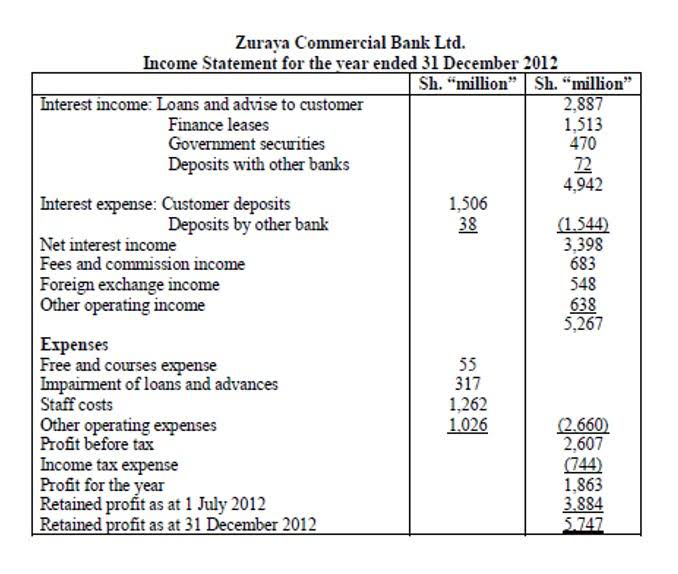
ACH Operations Bulletin # affirms the effective dates of the Differentiating Unauthorized Return Reasons (April 1, 2020) and the ACH Contact Registry (October 30, 2020) rules. The 60 calendar day return time is still in effect and is confirmed in ACH Operations Bulletin #5-2020. Many lenders are offering relief from immediate payment obligations; RDFIs may want to direct customers with hardships to work directly with their lenders. The CARES Act provides for $100 billion in relief funds to hospitals and other healthcare providers on the front lines of the coronavirus response.
- ODFIs, Originators, and Third-Party Senders may want to review practices, policies, and controls regarding reversals.
- Providing investment banking solutions, including mergers and acquisitions, capital raising and risk management, for a broad range of corporations, institutions and governments.
- Recourse for improper reversals will be able to be handled through the ACH return process.
- International ACH Transactions (IAT) initially will not be covered by the fee, but could be included in the future.
What is Rules Compliance?

Nacha will not enforce the signature requirement for the authorization of POP Entries; ACH Operations Bulletin # extends this relief indefinitely. Nacha will publish a 30-day advance notice prior to the expiration of this relief. Originators should understand that without a PIN or some other form of authentication beyond customer possession of the physical card they might have more difficulty defending a claim that the POS Entry was unauthorized and might face an elevated risk of return. For EIP2s made by ACH Direct Deposit with a settlement date of Monday, January 4, 2021, an RDFI is required to make funds available for cash withdrawal by 9 a.m.
New Rules to Reduce Successful Fraud Attempts and Assist Fund Recovery Now in Effect. Here’s What they Mean for Your FI

A payment made to the right person but induced on a fraudulent basis is not considered to have been made under False Pretenses. The amendment does not otherwise change the requirement for an RDFI to obtain a consumer’s WSUD. No, the RDFI may continue to use R03 (No Account/Unable to Locate Account) or R04 (Invalid Account Number Structure) to return those entries. One basic tenet of the Nacha Operating Rules is that an Originating Depository Financial Institution (ODFI) assumes responsibility for many warranties and indemnifications to each Receiving Depository Financial Institution (RDFI) and ACH Operator.

Supplementing Data Security Requirements

ODFIs and their Originators should be able to react differently to claims of errors, and potentially could avoid taking more ach return significant action with respect to such claims. The return of the requested entry as R06 can fulfill the RDFI’s requirement to advise the ODFI of the status of its request, provided the entry is returned within the RDFI’s 10 banking day response period. In this situation, the RDFI is not required to provide an additional or separate notification to the ODFI.

- Originators/ODFIs may modify the content of other fields within the Reversal only as necessary to facilitate proper processing of the Reversal.
- A Standard Entry Class or SEC code is a three letter code that describes how a payment was authorized by the consumer or business receiving an ACH transaction.
- Occurs when the receiver’s account lacks sufficient funds to complete the transaction.
- This portion of a recent Rule amendment becomes effective on April 1, 2025 and requires an RDFI to advise the ODFI of the status of a Request for Return within ten (10) banking days of receipt of the ODFI’s request.
Nacha collected information to QuickBooks explore the viability of a rule designating two-day ACH credits that could eliminate the use of Effective Entry Dates that are three and four banking days in the future for ACH credits. Return code R17 (File Record Edit Criteria), which was originally intended to denote an error, missing piece or discrepancy of information, was permitted for use if the RDFI suspects potential fraud. To be clear, it is not required, but rather, allowable by the rules, as a return reason at the discretion of the RDFI.
- This funding will be used to support healthcare-related expenses or lost revenue attributable to COVID-19 and to ensure uninsured American can get testing and treatment for COVID-19.
- An ACH Return is a communication that indicates why the Entry could not be completed as intended.
- By clicking on the “Buy Now” button, you acknowledge that you will be directed to a third-party site.
- Anyone who has reviewed Appendix Four of the Nacha Operating Rules & Guidelines can see the ACH Rules have multiple options for a financial institution to return an unauthorized ACH Entry.
- If those two 60-day periods are not confusing enough, Reg E imposes yet another obligation on RDFIs to act within 60 days.
Account Login
By understanding these key aspects of ACH payments, businesses can effectively navigate such scenarios and safeguard against potential financial losses. Reducing successful credit-push frauds—and improving funds recovery—is something all financial institutions should be doing. A package of Nacha Rule changes to help in those efforts went into effect Oct. 1. On March 15, 2024, Nacha passed 15 new ACH Rules changes surrounding ACH risk management, specifically targeted at reducing the incidence of successful fraud and improving the recovery of funds. In contrast, if a consumer claims they never authorized a payment, their bank has up to 60 calendar days to return the payment with code R05 (Unauthorized Consumer Debit). This longer timeframe reflects the more serious nature of authorization disputes.
What does a “Risk-Based Process” mean?
If a prenote is being used as intended, then if it is returned using Return Reason Codes R02, R03 or R04, that would prevent a subsequent live transaction from being returned. This likely would have no material effect on the calculation of a return rate. This rule reduces the return rate threshold for unauthorized debit entries from 1.0 percent to 0.5 percent. All other aspects of the Rules regarding the Unauthorized Return Rate Threshold remain the same. The rise in sophisticated fraud schemes that rely on “false pretenses” (yes, that’s now an official Nacha term)—especially Business Email Compromise (BEC) and vendor impersonation—has led to significant financial losses across industries. Recognizing this, Nacha is updating its rules to require organizations to proactively assess and manage ACH-related risks.
In the same realm How to Invoice as a Freelancer of unauthorized debits, this rule update provides a specification as to the timing of the return time frame. As such, the rule requires that an RDFI return ACH debits as “unauthorized” or “improper” in the extended return time frame by the opening of the sixth banking day following the completion of its review of the receiver’s signed WSUD. Also in the name of risk management, Nacha provided an additional exemption from funds availability requirements. Within this exemption, credit entries are included if an RDFI suspects that the transaction was originated under the newly defined False Pretenses that was laid out in the expansion of return code R17. On April 1, 2020, the re-purposed R11 return code becomes effective, and financial institutions will use it for its new meaning.
